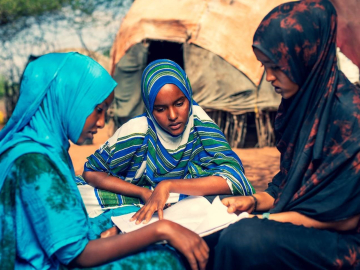Estimating Infertility: Conceiving of a New Approach
By Chelsea B. Polis, Carie M. Cox, Özge Tunçalp, Alexander C. McLain, and Marie E. Thoma
Infertility in low-income countries is a neglected reproductive health issue, despite its staggering impact. It’s also under-measured, especially in low-income settings—but a new approach to measuring the extent of the problem could be a catalyst for change.
The effects of infertility, particularly for women, can be severe. While men and women are equally as likely to be infertile, women are often blamed for a couple’s childlessness. The severity of consequences for infertility varies globally. Research in sub-Saharan Africa suggests that women believed to be infertile are more likely to face social ostracization, marital instability and divorce, and verbal, emotional or physical abuse (for one example, see this paper published in Perspectives in Public Health). Infertility is also linked with negative economic consequences and adverse impacts on mental and physical health. Despite these consequences, access to infertility care is limited in much of sub-Saharan Africa.
Genuine concern about high rates of unmet need for contraception, unintended pregnancy, and unsafe abortion in sub-Saharan Africa may contribute to the misperception that infertility is not a significant issue in this region even though prior studies (such as this one, published in PLoS Medicine) suggest this region suffers from high rates of infertility. Failing to address infertility could also paradoxically exacerbate unintended pregnancy, for example, as contraceptive non-use among fertile couples is commonly related to fears about future infertility. Addressing infertility may also help dispel mistrust around programs aiming to expand access to contraceptive services, which are sometimes perceived instead as “population control” efforts.
Infertility prevalence estimates could highlight the magnitude of the issue and facilitate response planning, but measurement of infertility is complicated and often expensive. Comparability between existing estimates is hampered by variation across studies in measurement approaches, including differences around when individuals are classified as infertile (such as the duration of time spent trying for pregnancy). Longitudinal studies would be useful, but are prohibitively expensive, particularly in low-income settings. Thus, there is a need for a pragmatic measurement approach in low-resource settings, which would ideally facilitate comparisons across studies using variable definitions of infertility, and also make use of existing cross-sectional data, to contain costs and make rapid generation of country-level infertility estimates more feasible.
The “current duration” measurement approach meets these needs. The technique has been validated in Europe and the United States, but has not previously been applied in a low-income setting. We applied this technique to Demographic and Health Survey (DHS) data, which is routinely collected and available in over 90 countries around the world, to provide nationally-representative estimates of infertility prevalence. Our analysis was recently published in the journal Human Reproduction, and thanks to generous support for publication costs from the WHO, is available Open Access and free of charge.
Starting with Nigeria, we found that close to one-third (31.3%) of Nigerian couples exposed to the chances of pregnancy would have difficulty conceiving within 12 months, an estimate which is consistent with other, smaller studies in the region. By 24 months, this estimate dropped substantially to 17.7%, and to 11.5% by 36 months. Infertility prevalence was higher among parous women and women over 35 years of age.
This study represents the first infertility prevalence estimates produced using a current duration approach in a low- or middle-income country (LMIC) setting, and could be leveraged to create a paradigm for generation of rapid and cost-effective infertility prevalence estimates for numerous countries where DHS or other suitable datasets already exist. We hope it might be useful to accelerate monitoring of infertility using existing datasets, permit cross-country comparisons, and more importantly, assist in forecasting health systems needs for infertility care.
Chelsea B. Polis, PhD, Associate, Department of Epidemiology, Johns Hopkins Bloomberg School of Public Health, and Senior Research Scientist, Guttmacher Institute
Carie M. Cox, MPH, PhD, Assistant Professor, Department of Public Health, St. Catherine University
Özge Tunçalp, MPH, MD, PhD, Scientist, Department of Reproductive Health and Research including UNDP/UNFPA/UNICEF/WHO/World Bank Special Programme of Research, Development and Research Training in Human Reproduction (HRP), World Health Organization
Alexander C. McLain, PhD, Assistant Professor, Department of Epidemiology and Biostatistics, University of South Carolina
Marie E. Thoma, PhD, Assistant Professor, Department of Family Science, University of Maryland
Join the thousands of subscribers who rely on Global Health NOW summaries and exclusive articles for the latest public health news. Sign up for our free weekday enewsletter, and please share the link with friends and colleagues: Subscribe to GHN
iStock




